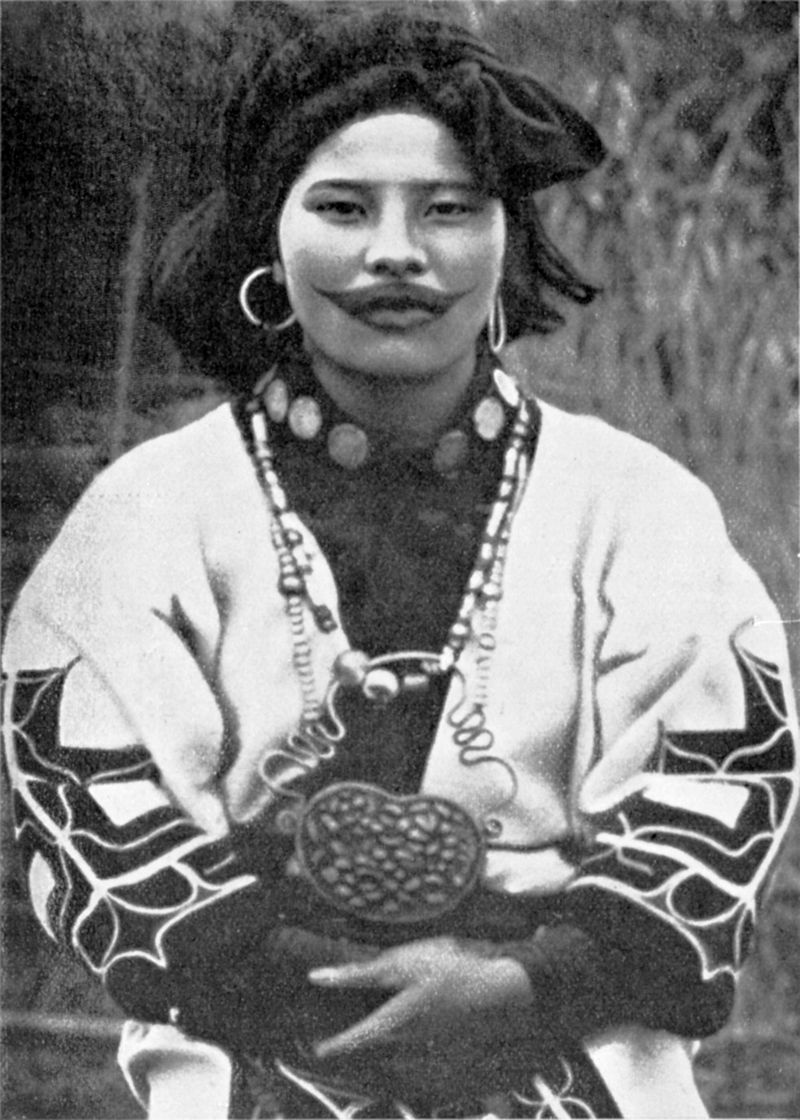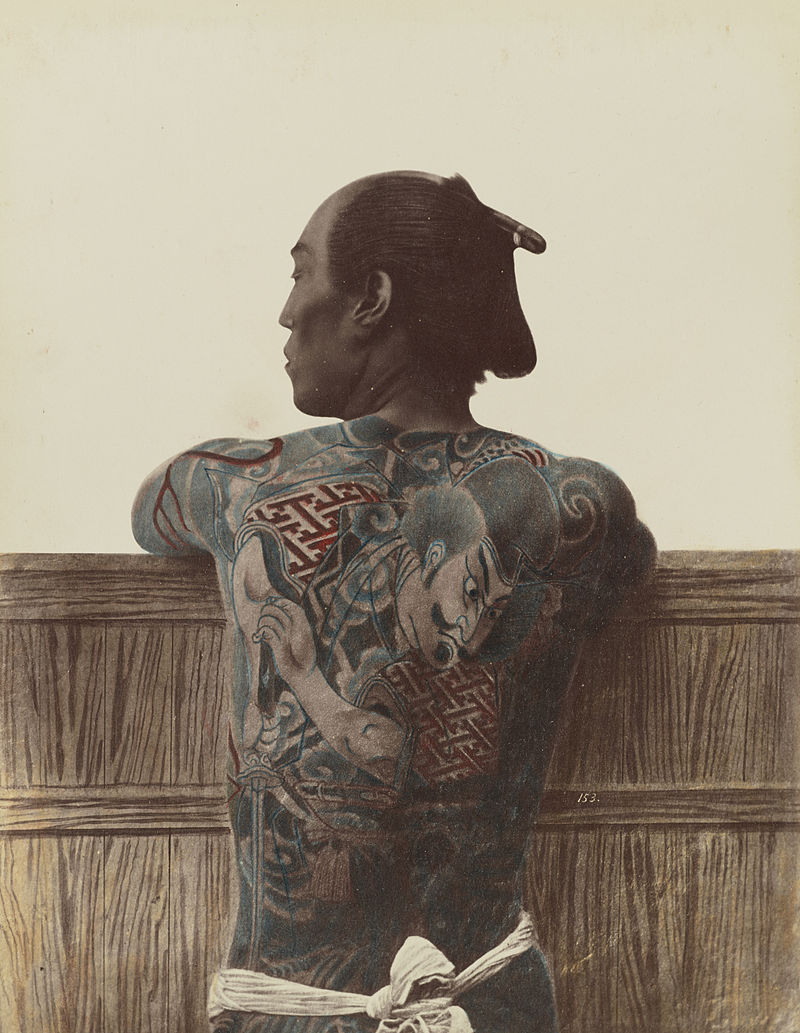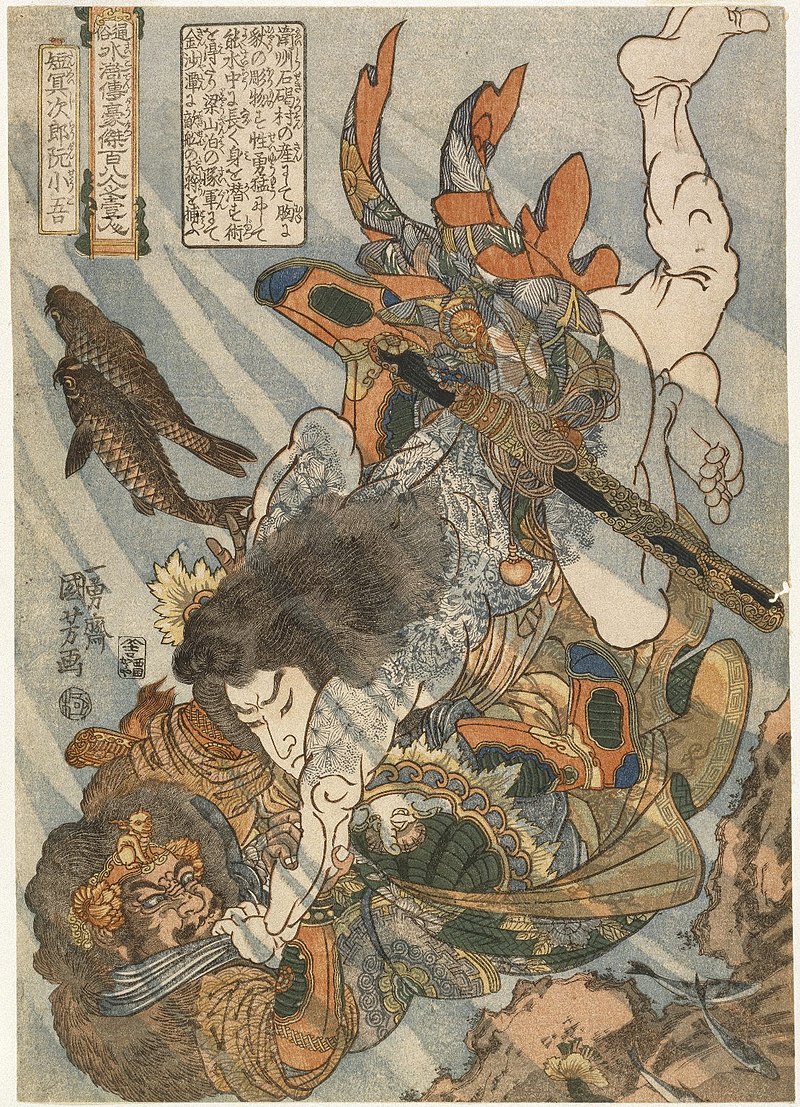Irezumi, the art of traditional Japanese tattooing, has been an integral part of Japan’s cultural tapestry for centuries. Characterized by its distinctive style, vivid imagery, and deep symbolic meanings, Irezumi transcends mere body decoration to embody a rich cultural heritage. This ancient practice, which involves intricate designs that cover large areas of the body, often tells stories or symbolizes individual beliefs, virtues, and societal statuses.
Origins in the Jomon Period
The roots of Irezumi can be traced back to the Jomon period (circa 10,000 BCE–300 BCE), where evidence suggests that tattooing in Japan may have had spiritual or status-related implications. Early forms were likely simple and functional, used as marks of social status, protection against evil, or symbols of tribal affiliation. These primitive tattoos set the foundation for the complex art form that Irezumi would become, reflecting the beliefs and customs of ancient Japanese society.
Evolution through the Yayoi, Kofun, and Edo Periods
As Japan entered the Yayoi period (circa 300 BCE–300 CE), tattoos began to serve as both spiritual symbols and as forms of punishment. This dual use continued into the Kofun period (circa 300–538 CE), with tattoos marking criminals and outcasts from society. However, it was during the Edo period (1603–1868) that Irezumi truly flourished as an art form. Tattoos became elaborate and highly aesthetic, often covering much of the body with intricate scenes and characters from folklore and mythology. This period saw Irezumi becoming a voluntary, decorative practice among the working class, particularly among firefighters, laborers, and later, members of the Yakuza, where it symbolized courage, loyalty, and a readiness to defend one’s honor.
While initially possibly serving as spiritual or status symbols, Irezumi’s evolution into a form of punishment, and later, a chosen mark of beauty, bravery, and allegiance, illustrates the complex interplay between societal norms and individual expression. Through each era, Irezumi has been a mirror to the societal attitudes towards conformity, punishment, and the human body as a canvas for art and identity.
Cultural Significance
Symbolism and Meanings
Irezumi is rich in symbolism, with each motif carrying deep meanings derived from Japanese folklore, nature, and philosophy. Dragons, one of the most iconic Irezumi motifs, symbolize strength, wisdom, and the power to protect. They are revered creatures in Japanese mythology, often associated with water elements and seen as guardians. Koi fish are another prevalent design, representing perseverance and determination.
The legend of the koi fish swimming upstream and transforming into a dragon is a beloved narrative, symbolizing personal growth and the overcoming of obstacles. Cherry blossoms, delicate and fleeting, stand for the ephemeral nature of life and beauty, echoing the samurai’s awareness of their own mortality and the importance of living honorably. Through these motifs, Irezumi serves as a medium for expressing personal beliefs, status, and identity, allowing wearers to carry symbols of their life’s journey, aspirations, and the virtues they hold dear.
Irezumi and the Samurai Class
For the samurai, Irezumi was more than an art form; it was a reflection of their values and the bushido code—the way of the warrior. Though not universally adopted among samurai, those who chose to wear tattoos often selected motifs and symbols that reflected their bravery, strength, and commitment to their duties. Dragons, tigers, and other powerful animals were popular choices, serving as amulets and marks of their fighting spirit and loyalty. Irezumi thus became a silent testament to the wearer’s honor and personal virtues, embodying the samurai’s dedication to their path and their preparedness to face life’s battles with courage.
Irezumi and the Yakuza
The relationship between Irezumi and the Yakuza, Japan’s infamous organized crime syndicates, is perhaps one of the most well-known aspects of Japanese tattoo culture. For the Yakuza, tattoos are both a badge of membership and a mark of personal achievement, symbolizing loyalty to the group and the individual’s commitment to the yakuza lifestyle. Full-body tattoos, often hidden under clothing, create a shared identity among members while keeping their affiliation invisible to the outside world.
The imagery used in Yakuza tattoos continues the tradition of using powerful symbols like dragons and tigers, but with added elements that may signify the wearer’s rank, specialties, or personal experiences within the organization. Irezumi, in this context, becomes a complex language of honor, allegiance, and an indelible record of one’s life within the underworld.
Modern Evolution and Global Influence
Changing Perceptions in Japan
The perception of Irezumi in Japan has undergone significant transformations since the Meiji period (1868–1912), when the government, aiming to modernize the nation’s image, outlawed tattoos, associating them with criminality. This ban pushed Irezumi into the underground, fostering a negative stigma that persists to some degree today.
In contemporary Japan, individuals with Irezumi can face social and legal challenges, including exclusion from public baths, gyms, and certain job opportunities, as tattoos are still often linked to Yakuza membership in the public consciousness. However, attitudes are gradually shifting, especially among younger generations who view Irezumi as a form of personal expression rather than a sign of delinquency.
Irezumi’s Influence on Global Tattoo Culture
Irezumi has left an indelible mark on global tattoo culture, captivating artists and enthusiasts worldwide with its distinctive style, intricate designs, and deep symbolism. The international fascination with Irezumi began to surge in the late 20th century, as travel and cultural exchange brought Japanese tattoo artists into contact with Western counterparts. This cross-pollination has led to a global appreciation of Irezumi’s techniques, such as tebori (hand-carving tattoos), and its aesthetic principles.
Artists outside Japan have embraced and adapted Irezumi motifs, integrating them into diverse tattoo traditions and styles. These adaptations often blend traditional Japanese elements with local influences, creating unique hybrids that honor the origins of Irezumi while reflecting the individuality of wearers across the world. This fusion of cultures has not only expanded the reach and appreciation of Irezumi but has also sparked a dialogue about cultural appropriation, authenticity, and the evolution of tattoo art as a global phenomenon.
While Irezumi tattoos illuminate the complex layers of Japanese culture and identity in more recent history, our post What Are Dogū Figures and What Do They Tell Us About Ancient Japan? takes you further back, revealing how Dogū figures contribute to our understanding of Japan’s ancient past. Learn about the art and spirituality of the Jōmon period through these fascinating artifacts.
Final Words
This traditional Japanese tattoo art, with its deep roots in the spiritual, social, and historical fabric of Japan, has navigated through periods of reverence, stigma, and resurgence. The changing perceptions of Irezumi within Japan—from a mark of beauty and honor to a symbol of criminality and back to a form of personal and artistic expression—reflect the nation’s ongoing dialogue with its past and its cultural identity. Globally, Irezumi has transcended its origins to influence tattoo cultures around the world, inspiring artists and enthusiasts with its unique motifs, storytelling capacity, and meticulous techniques.
As Irezumi continues to evolve, both within Japan and internationally, it stands as a testament to the enduring power of cultural practices to bridge time and geography, connecting people through shared aesthetics and values.


